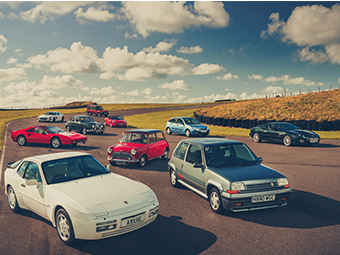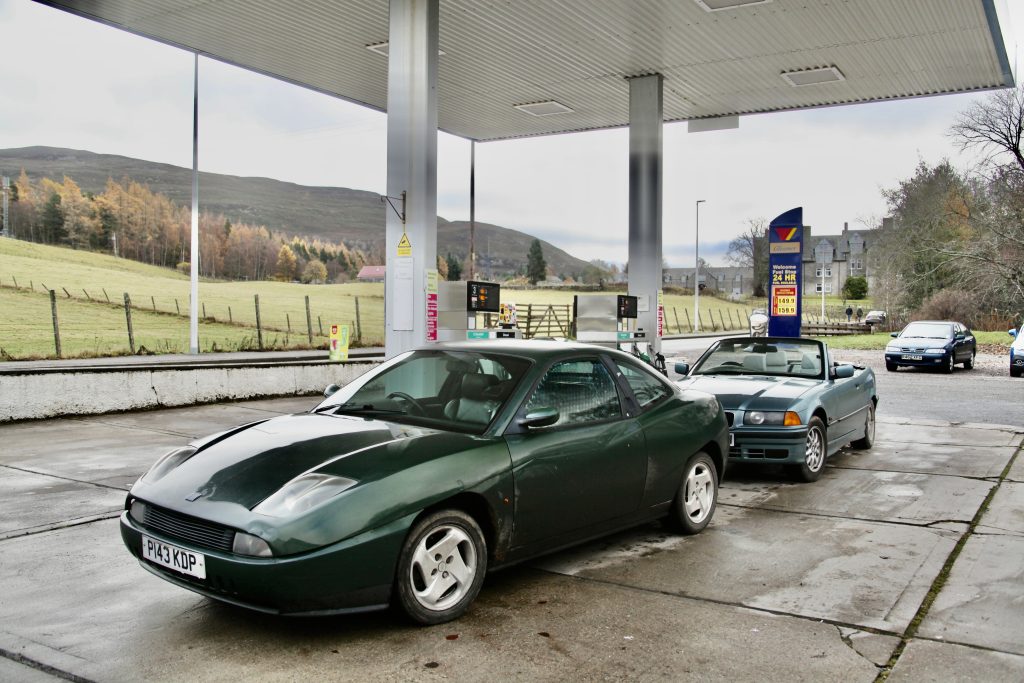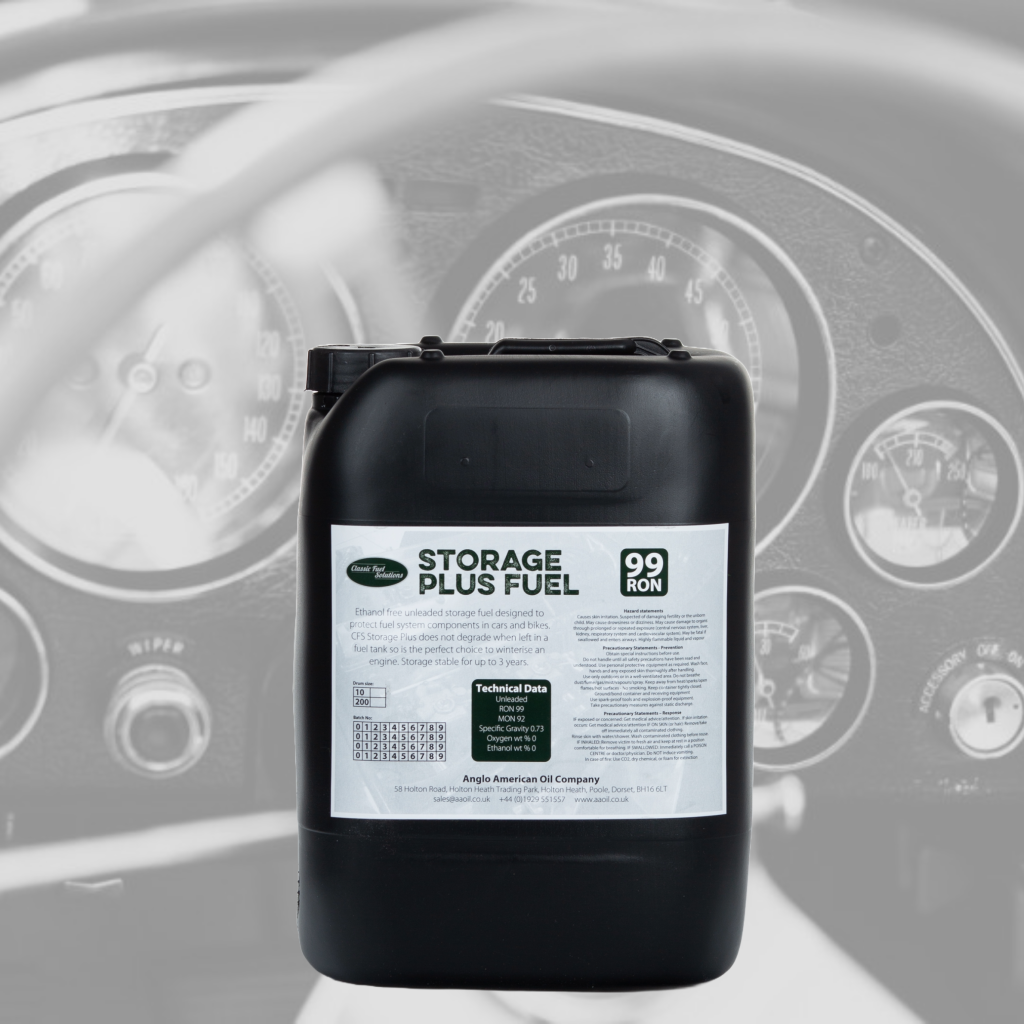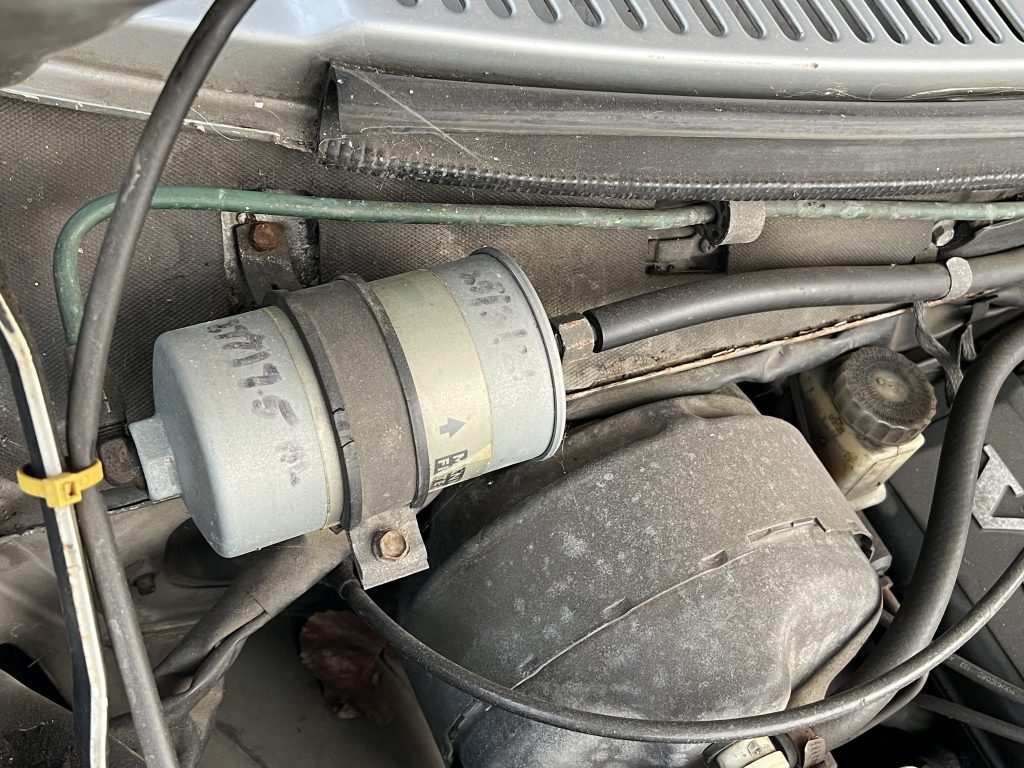Author: Craig Cheetham
Photography: Craig Cheetham
Modern fuels and old fuel lines aren’t the perfect mix. But how do you make sure your car is safe with today’s petrol…
It’s now over three years since E10 fuel – which has a 10 per cent ethanol blend – was standardised across the UK’s petrol pumps, yet despite initial concerns, most of our classics are still going strong. But is that down to careful maintenance, or more because the cars we’re using aren’t as badly affected by sustainable fuels as we first thought?

The answer is, of course, not straightforward, with two main concerns around the use of E10 fuel that need addressing – one relating to safety and the other relating to longevity.
The main safety concern for classic cars running on modern fuel is that the higher ethanol content of E10 petrol can degrade older components, attract moisture, and affect rubber components such as old fuel lines.
Older fuel systems were not designed for ethanol-blended fuel and with ethanol being essentially a solvent, it can slowly dissolve or degrade incompatible materials like certain rubbers and plastics. This could lead to leaky hoses and perished seals.
Reliability concerns are also centred around its solvent content – ethanol is hygroscopic, which means it absorbs water from the atmosphere. Put simply, if a car isn’t used frequently enough to regularly have its fuel supply replenished, water can accumulate in the fuel tank, fuel lines, and carburettor or injection system. As well as internal corrosion, this weaker fuel mixture simply isn’t as stable and won’t burn as well.
Ethanol can also dislodge old deposits from the fuel tank and lines, blocking filters, jets, injectors and carburettors. So why haven’t all our cars conked out?

Keep it moving
By far the most effective (and most enjoyable) way of avoiding ethanol-mix fuel problems is to keep using your classic as much as you can, so that the fuel doesn’t have time to ‘go off’, or to sit in your tank and fuel lines.
Even if your classic is stored off the road for winter, taking time to start the engine and run it up once every couple of weeks will keep the fuel system flowing and eradicate any moisture.
Cars have always liked being used – it’s what they’re designed for, after all – and it’s the best way of keeping your fuel system in good health.

Should I use E5 instead – and are there any other alternatives?
Certainly for older classics, which were designed to run on higher octane fuel in the first place, E5 makes sense – it varies between 97 and 95 Octane and will help prevent pinking on older engines, plus will make them run more efficiently.
If you only use your classic occasionally, then some places do still sell ethanol-free fuel. You can order it from Anglo-American Fuels, Classic Fuel Solutions, and MotorSpirit, for example, but it isn’t cheap and needs to be stored securely.
Other options are to add fuel stabilisers such as Merlin Motorsports Ethanol Protection, which reduce the hygroscopic effect of pump fuels.
It’s also worth looking at SUSTAIN, from Coryton Fuels, which is a sustainable fuel with less than one per cent ethanol content, but its availability is limited.
For most users, E5 (or Super Unleaded) is a viable and widely available option that will be more stable over time than E10.
How is it best to store my car?
If you’re laying your car up for a very long time, then the best advice is to drain the tank, or leave it with a minimal amount of fuel in it – fresh fuel should be sufficient to cause no major issues when you’re putting it back on the road.
If you’re putting it away for the winter, though, then the opposite is arguably better – fill the tank completely with fresh E5 and a stabiliser to help prevent condensation, so that water doesn’t get into the fuel system.
How can I futureproof my classic against prolonged E10 usage?
Yes, you can – and this is the best long-term solution. The key is to replace parts that aren’t perfectly compatible with ethanol-based fuels.
This should include replacing old rubber hoses, seals, gaskets, and fibreglass tanks with compatible materials such as silicon, polyethylene, braided or stainless steel – a worthwhile winter project if you’re putting your car in the garage for a few months.




Is E10 really a bad thing for classics?
Well, here’s the rub. It all depends on your car. Most ‘modern classics’ will continue unabashed, with no real issues. This is largely due to ECU-controlled fuelling systems, which since the mid-1990s have been harmonised to adjust how the engine operates based on different fuel grades across the world, so unless you have a particularly sensitive high-performance car, then providing you follow our advice around storage, its use is unlikely to cause major issues.
On older models, though, the risks are greater and we’d very much recommend the use of E5 fuel in addition to a fuel stabiliser, and to check your fuel system components as often as you check your oil and coolant – it’s cheaper, safer and less heartbreaking than losing your classic in an inferno, after all…
Looking for classic car insurance?
At Hagerty, we’ve been providing classic car insurance for more than 19 years. Get a quote from the people who love classics as much as you do.









All our classics run on E5 plus use of Cohline 2240 fuel hose. No issues to date with this combination.
I don’t even put E10 in my lawnmower, let alone my 63 Rambler or my 74 Rover V8.
For may older designs of engine, E10 will help them run a lot smoother than they used to do. This is down to a phenomenon known as ‘cyclic variability.’ Plus, if old style rubber fuel components, such as hoses, haven’t already been replaced, on a regular basis, any modern petrol, ethanol or not, will have had a deleterious effect on those components over time. It is odd that we are getting our hair off over E10 fuel, when I can recall petrol such as Cleveland Discol being sold right up to the 1970’s, which had an ethanol content. No harm was reported over time back then, so why the hoo-hah now? Modern petrol has a short shelf life, & has done so for quite a few decades now, so it isn’t just down to ethanol content. Also, when a pump says ‘E10,’ that means, ‘up to 10% ethanol.’ Which doesn’t mean the fuel actually has that amount of ethanol in it. There have been reports of E10 fuel containing less than the 10% limit. What is also ignored by UK owners is that E10 has been available in Europe for quite a bit longer, without reports of dire consequences from old vehicle owners! [Sorry, ”classic car” owners!!] For those who have the time to read a book, I suggest getting hold of a copy of Paul Ireland’s book, ”Classic Engines, Modern Fuel?” The book contains the results of a series of experiments on an old design engine {MG XPAG, IIRC?] conducted by engineers at Manchester University, just before E10 became widely available in the UK. The results put E10 fuel in a quite different light, as far as engine performance was concerned. Anyway, us old motor enthusiasts should be glad that today’s modern petrol engined blobbies-on-wheels wouldn’t run at all well on the fuel available in the UK post-WW2! Yet the Ford sidevalve engine in my Dellow, of the era, would be quite happy to get the owner to work and home again, along with trying to ‘win’ the odd trial every weekend? Issues with modern fuel? Not surprising! Don’t forget the issues with modern lubricating oils as well. Or, modern day air in our old style tyres? Or fancy lightbulbs? Much like the issues old age pensioners have with modern day society? Things change, and we have to adapt, or hide away. Happy backfiring!!
Esso petrol
What’s in our Synergy Supreme+ 99 premium petrol?
Our Synergy Supreme+ 99 petrol has more cleaning power than our regular petrol – and includes molecules engineered to reduce friction in your engine and help moving parts work more efficiently. *
Although our pumps have E5 labels on them, our Synergy Supreme+ 99 is ethanol-free (except, due to technical supply reasons, in Devon, Cornwall, North Wales, North England and Scotland). Legislation requires us to place E5 labels on pumps that dispense unleaded petrol with ‘up to 5% ethanol’, including those that contain no ethanol.
There’s currently no requirement for renewable fuel, like ethanol, to be present in super unleaded
This is an interesting article and full of sound advice. The only thing I would add – is that if you own a pre 1970’s classic, with a non sealed tank which vents to the atmosphere, then it is (IMO), probably best to store the car with minimal fuel in over the winter and then top up with a couple of gallon cans of fresh fuel when you bring your car out of hibernation. Also if you do put in a fuel stabiliser, it is only effective with fresh fuel (Less than a couple of weeks old). I always run my classics on E5, but have had problems wth fuel separation into water plus residue over the winter without a stabiliser. I believe modern fuel can go off in as little as six weeks. Ethanol based fuel is going to be an increasing problem with our classic car hobby I feel.
What would you recommend for a 1997 Honda Prelude E10 or E5
what would you recommend for a 1980 5.7 Corvette
I use Shell V-Power its worth the extra cost to keep your fuel system in good condition in theory it also improves performance and mpg but i cannot vouch for that as is very difficult to measure.
I was in the motor trade in the 1950s until 1969 and one of our petrol brands we sold was Cleveland Discol which had been sold since the 1930s. This had an Ethanol content of 20% YES 20% and I used it in my 1936 Morris 8, then my 1955 Hillman M8 Minx and my present car a 1964 Singer Vogue, NO trouble at all. At the start of all the “panic” about ethanol, I put exmples of petrol hose, brass, alloy, etc in a large jar of E 10 fual an there has been no notice of any bad effects. I think the older Classic cars up until about 1970 are ok as they use stuff much like pre war cars but Modern classics have a lot of plastic pipes etc which could be bad.
I think the answer is in the text ! Use E5 as it’s got less harmful ethanol content.
I’ve only ever used E5 in my 72 Hillman Imp. If I’ve HAD to use E10 in an emergency, I’ve only ever put a “splash and dash” amount in the tank,band diluted it with E5 as soon as possible. I have an in-tank fuel filter fitted as well as a Filter King at the busy end.
Thanks!
Its a discussion that’s been on-going since E10 introduction but very much of concern to those with older cars. ( and Lawnmowers!)
Fingers crossed that E5 continues to be available.
Best to All here.